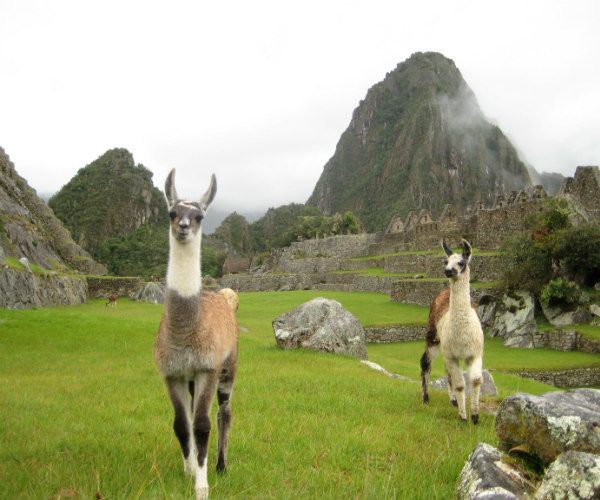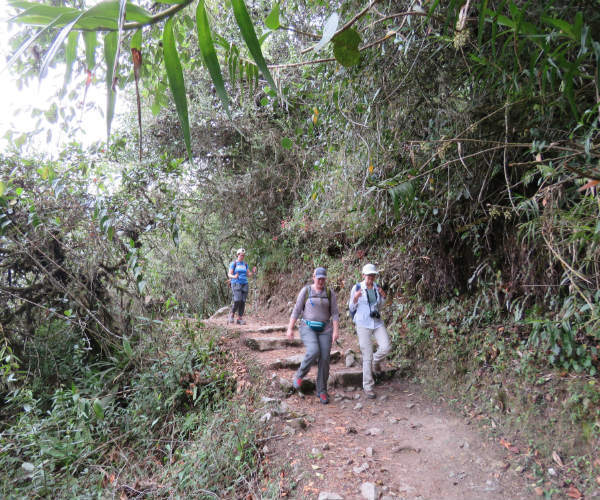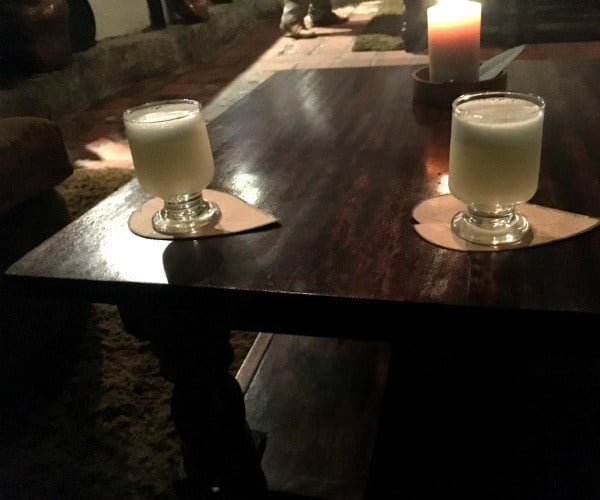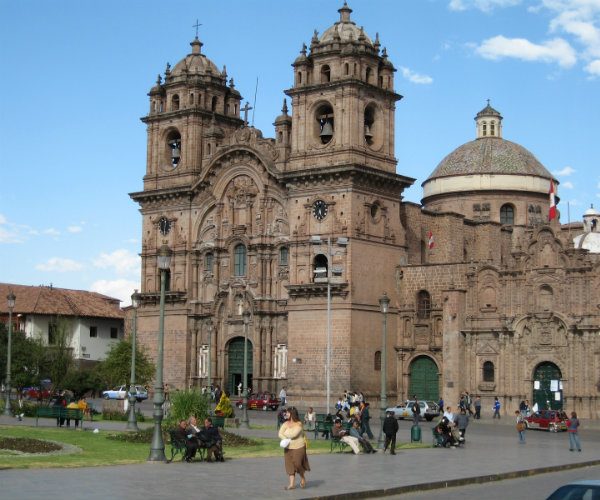Attractions · Going Out · Peru · Regions · South America
Peru’s Sacred Valley and Machu Picchu: what to know before you go
The Sacred Valley of Peru is a feast for the senses—colorful woven fabrics, mountains that soar skyward with little warning (or foothills), an ancient culture full of innovation, and a contemporary cuisine that has emerged from traditional crops, international influence, and creative playfulness among the country’s best chefs. From elevation headaches to photogenic llamas, here’s what to know before your adventure!
 Reserve early
If you are into hiking or history and have dreamed about traveling along the ancient Inca Trail traversed by thousands, you need to reserve early. A few years ago, Peru implemented a permit system, limiting the number of entries per day. The permits sell out quickly, so to ensure you get the date that you want, the earlier you make your plans, the better. The same can be said for Huayna Picchu or Machu Picchu Mountain—two hiking options from Machu Picchu that offer a bird’s eye view of the ruins. Don’t wait until the last minute.
Reserve early
If you are into hiking or history and have dreamed about traveling along the ancient Inca Trail traversed by thousands, you need to reserve early. A few years ago, Peru implemented a permit system, limiting the number of entries per day. The permits sell out quickly, so to ensure you get the date that you want, the earlier you make your plans, the better. The same can be said for Huayna Picchu or Machu Picchu Mountain—two hiking options from Machu Picchu that offer a bird’s eye view of the ruins. Don’t wait until the last minute.
 Prepare for a range of micro-climates
Packing light is always recommended (the less you have, the less you have to worry about!), but Peru’s Sacred Valley has a little bit of everything, and weather in the mountains can change on a dime. You will need everything from a warm jacket for the evenings and higher elevation climates to lightweight, quick dry clothing for Machu Picchu and the valleys, which are much warmer and more humid. Many thin layers are better than one or two heavy layers. It will be easier to adjust your clothing to suit your activity and the temperature.
Prepare for a range of micro-climates
Packing light is always recommended (the less you have, the less you have to worry about!), but Peru’s Sacred Valley has a little bit of everything, and weather in the mountains can change on a dime. You will need everything from a warm jacket for the evenings and higher elevation climates to lightweight, quick dry clothing for Machu Picchu and the valleys, which are much warmer and more humid. Many thin layers are better than one or two heavy layers. It will be easier to adjust your clothing to suit your activity and the temperature.
 Acclimatize before imbibing
Wait a day before trying a pisco sour. It’s easy to get dehydrated just from flying. But you are also landing in Cusco, which is situated about 11,000 feet above sea level. Your body will thank you for not consuming any alcohol that first day while it works to acclimatize. Drink coca tea instead, but don’t try to bring it home. Coca tea is medicinal and has been consumed by Andean people for hundreds of years to boost energy. It is a wonderful remedy for altitude sickness and does not cause any adverse effects (though drinking too much can leave you feeling jittery, akin to having too much coffee). Since cocaine (illegal in Peru) is chemically produced from the same plant, it is illegal to bring coca tea into the United States.
Acclimatize before imbibing
Wait a day before trying a pisco sour. It’s easy to get dehydrated just from flying. But you are also landing in Cusco, which is situated about 11,000 feet above sea level. Your body will thank you for not consuming any alcohol that first day while it works to acclimatize. Drink coca tea instead, but don’t try to bring it home. Coca tea is medicinal and has been consumed by Andean people for hundreds of years to boost energy. It is a wonderful remedy for altitude sickness and does not cause any adverse effects (though drinking too much can leave you feeling jittery, akin to having too much coffee). Since cocaine (illegal in Peru) is chemically produced from the same plant, it is illegal to bring coca tea into the United States.
 Ask to take photos of local people, and be prepared to tip
Asking to take photos of anyone is just plain common courtesy, particularly indigenous people and children. While not all your photography subjects will expect a tip, most will. Some situations are obvious; you will definitely see Quechua women in traditional dress, more than willing to pose with their llamas for a small propina. If you’re traveling with a local guide, he or she can offer further guidance but have some Peruvian soles easily accessible just in case.
Ask to take photos of local people, and be prepared to tip
Asking to take photos of anyone is just plain common courtesy, particularly indigenous people and children. While not all your photography subjects will expect a tip, most will. Some situations are obvious; you will definitely see Quechua women in traditional dress, more than willing to pose with their llamas for a small propina. If you’re traveling with a local guide, he or she can offer further guidance but have some Peruvian soles easily accessible just in case.
 If possible, arrive one or two days early
Travelers often feel a bit of whiplash when going a great distance, and many prefer to arrive early whenever possible. An old tale captures this notion by suggesting that while traveling, it’s important to pause to ‘let your soul catch up’. Those with less romantic world views may simply call this jet lag. Regardless, extra time allows you to rest, let your bags find you if they are delayed, explore Cusco freely without any agenda, and get used to the higher elevation before the “real” adventure begins.
If possible, arrive one or two days early
Travelers often feel a bit of whiplash when going a great distance, and many prefer to arrive early whenever possible. An old tale captures this notion by suggesting that while traveling, it’s important to pause to ‘let your soul catch up’. Those with less romantic world views may simply call this jet lag. Regardless, extra time allows you to rest, let your bags find you if they are delayed, explore Cusco freely without any agenda, and get used to the higher elevation before the “real” adventure begins.
 Foodie? Extend your trip to Lima
The culinary scene in Peru is hotter than ever, and while Cusco has some incredible food, Lima, being a larger city, has many more options and with a bit more international fusion. From street food to contemporary twists on indigenous dishes to Michelin-starred restaurants, Lima is the hub. Guinea pig, or cuy, is a delicacy (and you should try at least one bite!). You may also now indulge in another pisco sour.
Foodie? Extend your trip to Lima
The culinary scene in Peru is hotter than ever, and while Cusco has some incredible food, Lima, being a larger city, has many more options and with a bit more international fusion. From street food to contemporary twists on indigenous dishes to Michelin-starred restaurants, Lima is the hub. Guinea pig, or cuy, is a delicacy (and you should try at least one bite!). You may also now indulge in another pisco sour.
 Matt Holmes is the Founder & President of Boundless Journeys. Boundless Journeys is an award-winning tour operator that goes off the beaten path for immersive and authentic travel experiences.
If you would like to be a guest blogger on A Luxury Travel Blog in order to raise your profile, please contact us.
Matt Holmes is the Founder & President of Boundless Journeys. Boundless Journeys is an award-winning tour operator that goes off the beaten path for immersive and authentic travel experiences.
If you would like to be a guest blogger on A Luxury Travel Blog in order to raise your profile, please contact us.
 Reserve early
If you are into hiking or history and have dreamed about traveling along the ancient Inca Trail traversed by thousands, you need to reserve early. A few years ago, Peru implemented a permit system, limiting the number of entries per day. The permits sell out quickly, so to ensure you get the date that you want, the earlier you make your plans, the better. The same can be said for Huayna Picchu or Machu Picchu Mountain—two hiking options from Machu Picchu that offer a bird’s eye view of the ruins. Don’t wait until the last minute.
Reserve early
If you are into hiking or history and have dreamed about traveling along the ancient Inca Trail traversed by thousands, you need to reserve early. A few years ago, Peru implemented a permit system, limiting the number of entries per day. The permits sell out quickly, so to ensure you get the date that you want, the earlier you make your plans, the better. The same can be said for Huayna Picchu or Machu Picchu Mountain—two hiking options from Machu Picchu that offer a bird’s eye view of the ruins. Don’t wait until the last minute.
 Prepare for a range of micro-climates
Packing light is always recommended (the less you have, the less you have to worry about!), but Peru’s Sacred Valley has a little bit of everything, and weather in the mountains can change on a dime. You will need everything from a warm jacket for the evenings and higher elevation climates to lightweight, quick dry clothing for Machu Picchu and the valleys, which are much warmer and more humid. Many thin layers are better than one or two heavy layers. It will be easier to adjust your clothing to suit your activity and the temperature.
Prepare for a range of micro-climates
Packing light is always recommended (the less you have, the less you have to worry about!), but Peru’s Sacred Valley has a little bit of everything, and weather in the mountains can change on a dime. You will need everything from a warm jacket for the evenings and higher elevation climates to lightweight, quick dry clothing for Machu Picchu and the valleys, which are much warmer and more humid. Many thin layers are better than one or two heavy layers. It will be easier to adjust your clothing to suit your activity and the temperature.
 Acclimatize before imbibing
Wait a day before trying a pisco sour. It’s easy to get dehydrated just from flying. But you are also landing in Cusco, which is situated about 11,000 feet above sea level. Your body will thank you for not consuming any alcohol that first day while it works to acclimatize. Drink coca tea instead, but don’t try to bring it home. Coca tea is medicinal and has been consumed by Andean people for hundreds of years to boost energy. It is a wonderful remedy for altitude sickness and does not cause any adverse effects (though drinking too much can leave you feeling jittery, akin to having too much coffee). Since cocaine (illegal in Peru) is chemically produced from the same plant, it is illegal to bring coca tea into the United States.
Acclimatize before imbibing
Wait a day before trying a pisco sour. It’s easy to get dehydrated just from flying. But you are also landing in Cusco, which is situated about 11,000 feet above sea level. Your body will thank you for not consuming any alcohol that first day while it works to acclimatize. Drink coca tea instead, but don’t try to bring it home. Coca tea is medicinal and has been consumed by Andean people for hundreds of years to boost energy. It is a wonderful remedy for altitude sickness and does not cause any adverse effects (though drinking too much can leave you feeling jittery, akin to having too much coffee). Since cocaine (illegal in Peru) is chemically produced from the same plant, it is illegal to bring coca tea into the United States.
 Ask to take photos of local people, and be prepared to tip
Asking to take photos of anyone is just plain common courtesy, particularly indigenous people and children. While not all your photography subjects will expect a tip, most will. Some situations are obvious; you will definitely see Quechua women in traditional dress, more than willing to pose with their llamas for a small propina. If you’re traveling with a local guide, he or she can offer further guidance but have some Peruvian soles easily accessible just in case.
Ask to take photos of local people, and be prepared to tip
Asking to take photos of anyone is just plain common courtesy, particularly indigenous people and children. While not all your photography subjects will expect a tip, most will. Some situations are obvious; you will definitely see Quechua women in traditional dress, more than willing to pose with their llamas for a small propina. If you’re traveling with a local guide, he or she can offer further guidance but have some Peruvian soles easily accessible just in case.
 If possible, arrive one or two days early
Travelers often feel a bit of whiplash when going a great distance, and many prefer to arrive early whenever possible. An old tale captures this notion by suggesting that while traveling, it’s important to pause to ‘let your soul catch up’. Those with less romantic world views may simply call this jet lag. Regardless, extra time allows you to rest, let your bags find you if they are delayed, explore Cusco freely without any agenda, and get used to the higher elevation before the “real” adventure begins.
If possible, arrive one or two days early
Travelers often feel a bit of whiplash when going a great distance, and many prefer to arrive early whenever possible. An old tale captures this notion by suggesting that while traveling, it’s important to pause to ‘let your soul catch up’. Those with less romantic world views may simply call this jet lag. Regardless, extra time allows you to rest, let your bags find you if they are delayed, explore Cusco freely without any agenda, and get used to the higher elevation before the “real” adventure begins.
 Foodie? Extend your trip to Lima
The culinary scene in Peru is hotter than ever, and while Cusco has some incredible food, Lima, being a larger city, has many more options and with a bit more international fusion. From street food to contemporary twists on indigenous dishes to Michelin-starred restaurants, Lima is the hub. Guinea pig, or cuy, is a delicacy (and you should try at least one bite!). You may also now indulge in another pisco sour.
Foodie? Extend your trip to Lima
The culinary scene in Peru is hotter than ever, and while Cusco has some incredible food, Lima, being a larger city, has many more options and with a bit more international fusion. From street food to contemporary twists on indigenous dishes to Michelin-starred restaurants, Lima is the hub. Guinea pig, or cuy, is a delicacy (and you should try at least one bite!). You may also now indulge in another pisco sour.
 Matt Holmes is the Founder & President of Boundless Journeys. Boundless Journeys is an award-winning tour operator that goes off the beaten path for immersive and authentic travel experiences.
If you would like to be a guest blogger on A Luxury Travel Blog in order to raise your profile, please contact us.
Matt Holmes is the Founder & President of Boundless Journeys. Boundless Journeys is an award-winning tour operator that goes off the beaten path for immersive and authentic travel experiences.
If you would like to be a guest blogger on A Luxury Travel Blog in order to raise your profile, please contact us.Did you enjoy this article?
Receive similar content direct to your inbox.


I struggle with altitude and I think I’d find it hard coming straight in at 11,000 feet. Plenty of good common sense advice here. I’ve still not ticked off Machu Pichu. It’s probably only going to be a once in a lifetime destination so I’d hate to spoil it with altitude sickness. For me it would be worth investing a couple of extra days in preparation.
Your doctor can prescribe medication to help with adjustment, and being well-rested and well hydrated is important, too. Unfortunately, Lima, which is typically the jumping off point for getting to Cusco, is basically at sea level. So spending 2 or 3 full days in Cusco to get over the adjustment will help.
I often like to spend a few minutes trying to strike up a relationship with potential local models. If you take an interest in them and give them the impression that you are going to give them more than a basic tip you can move them around to get the best back-drop. So, it’s worth learning a smattering of the local lingo so that you can communicate with them.
If you can make them laugh or smile naturally you are more likely to get a picture that really sums up the place and it’s people.
What does Guinea Pig taste like? It’s worrying when the encouragement is try at “least one bite.”
I’ve tried a lot of foods around the world and before I take that first bite someone usually says, “It’s a bit like chicken.” Most of the time it tastes NOTHING like chicken.” Goats brain definitely didn’t taste like chicken.
It’s actually quite tasty, and does not taste like chicken. It’s very mild and taste a bit like a pork. But many people are put off by it as they are often pets in North America and Europe.
Oh no, A guinea pig? I dont think I have the heart to try one
I’m planning a trip to South America next year and the more I read about different countries, the harder it gets to decide which country to choose for the first time. Peru and Chile are the most tempting to me, they both seem like paradise for hikers. I guess I’ll toss a coin! ;)
They are so different, if you have the time, I’d spend time in both! Peru has incredible culture and Inca history, of course, but southern Chile and Argentina have incredible landscapes.
Very informational, thanks for this. I wasn’t sure what to expect in the sacred valley of Peru because I often have a hard time finding first-hand information about specific places, especially when it’s not as popular a destination. When I visit a country, I leave everything to chance, well some of the times. I like to surprised once in a while, So I ask the locals what places they would prefer that I visit or what restaurants or food I should try. Thankfully, all my visits turned out great and the people that I’ve met gave me the best memories.
Being prepared can be invaluable when travelling, so these are great tips for anyone thinking of going to the Sacred Valley of Peru. The changeable weather is a really good point as I would have just thought, stereotypically, that it’d be warm and fairly stable in temps during spring/summer seasons. I don’t think I’d heard of Coca tea before. My energy levels are in a severe need of a boost all the time, so I wish that were available in the UK! I’ll have to investigate that a little more to see what plan derivatives it actually has in its formation. Being forewarned to ask to take photographs is important to know; it would be awful to not respect the culture and those living there, causing any upset without intending to.